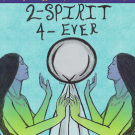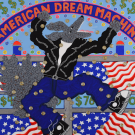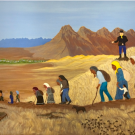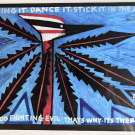Two Spirit: Understanding and Celebrating Identities
Connecting—Anchor Standard 11, 1.VA:RE7.1, 5.VA:RE7.1, 6.VA:RE7.1, 8.VA:RE7.1, W.8.2, W.8.4, W.8.6, W.8.7, W.8.8, RI.8.1, RI.8.2, RI.8.4, RI.8.6, SL.8.2, WL.CL2.N: Cultural Products, Practices, and Perspectives, WL.CL4.A: Intercultural Influences, 7-8.1.8.G, 7-8.2.2.G, 7-8.4.4.GThis four-lesson unit offers middle school students an opportunity to explore the rich history and cultural significance of Two-Spirit identities within Indigenous communities. Students will begin by understanding the distinctions between gender, sex, and sexuality, setting the foundation for a deeper exploration of Two-Spirit identities. Lessons describe the history of Two-Spirit people, highlighting their roles and traditions within Native American and Indigenous cultures, and differentiating these identities from Western LGBTQIA+ concepts.






